Are you interested in creating your own bamboo rake and embracing the art of handmade craftsmanship? In this guide, we’ll walk you through the step-by-step process of how to make a bamboo rake, turning this traditional tool into a unique and functional piece crafted by your own hands.
Contents [hide]
1. How to Make a Bamboo Rake?
Making a bamboo rake is a relatively simple yet rewarding DIY project that allows you to create a useful gardening tool. Here’s a step-by-step guide on how to make a bamboo rake:
Materials Needed:
- Bamboo stalks: Select straight and sturdy bamboo stalks for the handle and teeth of the rake.
- Saw: To cut the bamboo to the desired lengths.
- Sandpaper: For smoothing rough edges.
- Twine or cordage: To bind the bamboo pieces together.
- Knife: For shaping and fine adjustments.
- Optional: Varnish or sealant for finishing.
Step-by-Step Instructions:
Step 1: Gather and Prepare Bamboo
Select bamboo stalks with a diameter suitable for the rake handle and teeth. The handle should be longer and thicker. Use a saw to cut the bamboo to the desired lengths. For the handle, aim for a length that provides a comfortable grip.
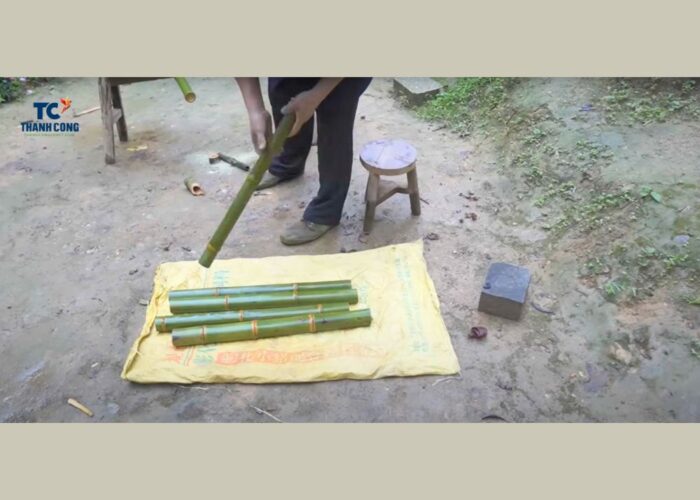
Step 2: Smooth the Edges
Use sandpaper to smooth any rough edges on the bamboo pieces. This will make the rake comfortable to use and prevent splinters.
Step 3: Prepare Rake Teeth
For the rake teeth, cut smaller bamboo sections with a length of about 8-10 inches. These will serve as the tines or teeth of the rake.
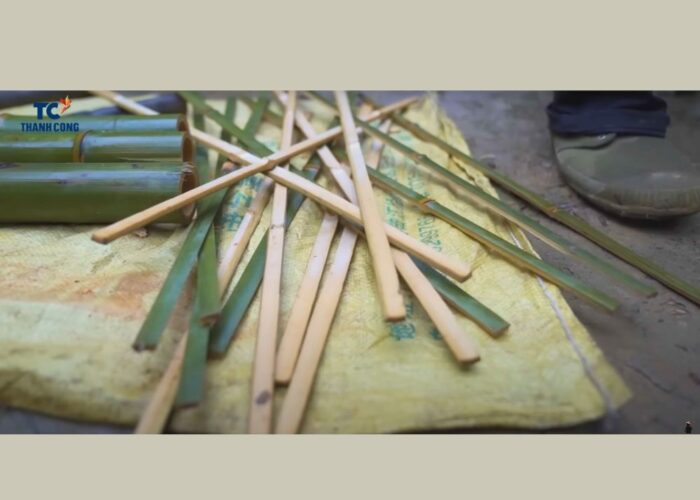
Step 4: Arrange and Bind Teeth
Arrange the bamboo teeth evenly along one side of the handle, leaving a gap between each tooth. Ensure that the points are facing outward. Use twine or cordage to tightly bind the teeth to the handle. Wrap the cordage several times around each tooth to secure them in place.
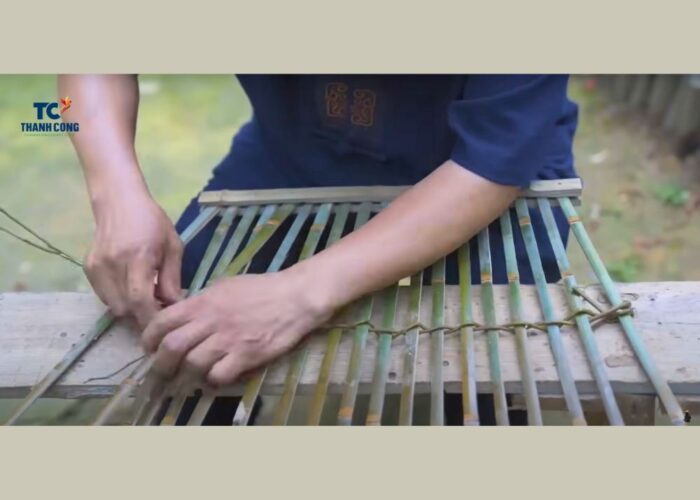
Step 5: Prepare Rake Teeth
Use a lighter to heat the tips of the bamboo tines for the purpose of bending them. This step is crucial for the rake to effectively gather leaves and debris.
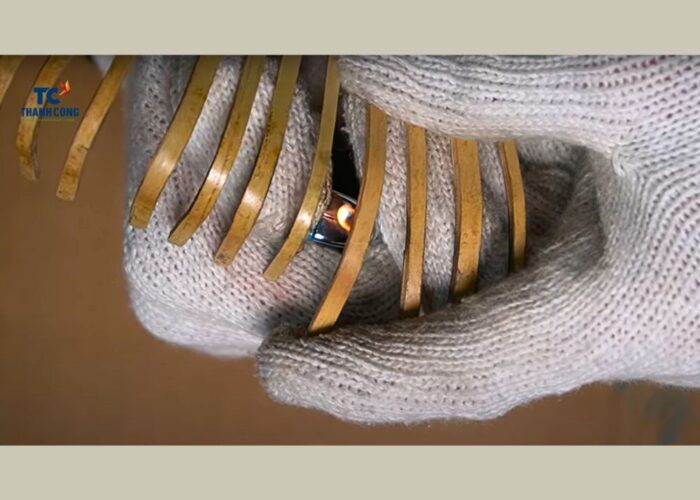
Step 6: Secure the Handle
Bind the top of the handle to reinforce it. This will provide additional strength and durability to the rake.
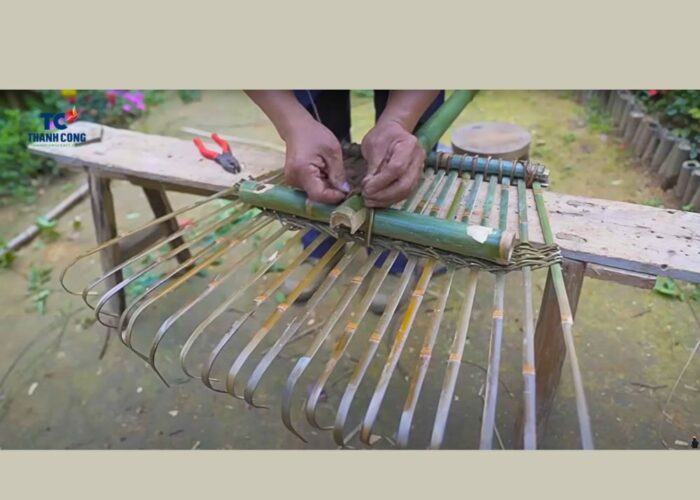
Step 7: Optional Finishing
If desired, apply a varnish or sealant to protect the bamboo from the elements. This step is particularly useful if you plan to use the rake outdoors.
Step 8: Allow to Dry
If you applied a finish, allow the rake to dry completely before using it. By following these steps, you can create a simple and effective.
2. FAQs
2.1 Advantages of bamboo rakes
Bamboo rakes present a range of advantages that make them an excellent choice for gardening tasks. One notable advantage is their lightweight nature, which facilitates easy maneuverability and reduces user fatigue during prolonged use.
In addition to their practicality, bamboo rakes are eco-friendly, as bamboo is a sustainable and renewable resource. This not only supports environmental conservation but also reflects responsible resource utilization in the realm of gardening tools.
Furthermore, the inherent strength and durability of bamboo contribute to the overall longevity of these rakes. Their robust construction ensures that they can withstand the rigors of various gardening activities. An environmentally conscious feature of bamboo rakes is their biodegradability, which means that, at the end of their life cycle, they naturally decompose, minimizing their impact on the environment.
Last but not least, bamboo rakes offer a cost-effective solution for gardeners. In comparison to rakes made from alternative materials, bamboo rakes often provide an affordable yet high-quality option, making them accessible to a wide range of users.
2.2 What is a bamboo rake used for?
A bamboo rake is primarily used for various gardening tasks, particularly in the maintenance of outdoor spaces. Its design, featuring a handle and bamboo teeth, makes it effective for tasks such as raking leaves, gathering debris, and leveling soil.
The spaced bamboo teeth allow for efficient collection of leaves and other lightweight materials, making it an ideal tool for keeping gardens, lawns, and pathways clean and well-maintained.
Additionally, bamboo rakes are suitable for tasks like spreading mulch, leveling gravel, or preparing the soil for planting. Their versatility and eco-friendly nature contribute to their popularity as essential tools in gardening and landscaping activities.
2.3 Why do we use rakes in the garden?
A rake is used in the garden for several essential purposes. One of the primary functions is to gather and remove leaves, debris, and other organic matter from the garden surface. Raking helps maintain a clean and tidy appearance, preventing the accumulation of materials that can impede plant growth or harbor pests.
Additionally, raking is instrumental in preparing the soil for planting. It helps to break up clumps, remove rocks, and level the ground, creating a more conducive environment for seeds or plants. Raking also aids in the distribution of mulch or compost, promoting even coverage and providing insulation for plants.
Furthermore, raking can be employed for lawn care, including tasks like dethatching, which involves removing dead grass and moss to enhance the health of the turf. Overall, the use of a rake in the garden contributes to the aesthetics, health, and productivity of the outdoor space by ensuring proper soil preparation and maintenance.
If you have any further questions, don’t hesitate to send thanhcongcraft an email us at info@thanhcongcraft.com or message us at WhatsApp: +84967485411. Hope to serve you soon! Best regard!


